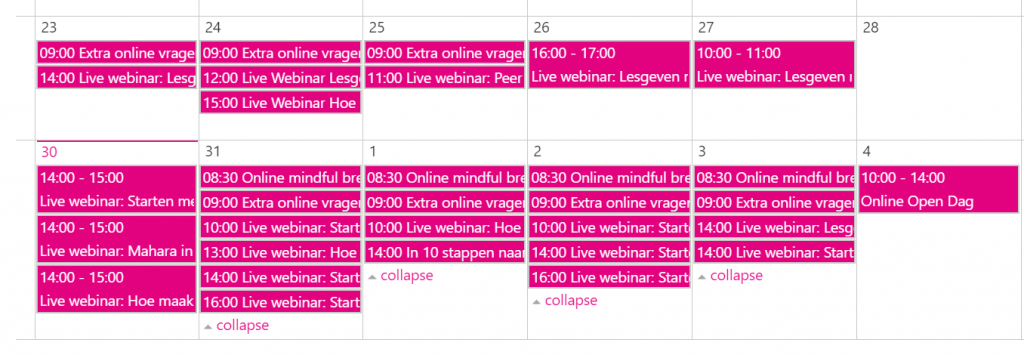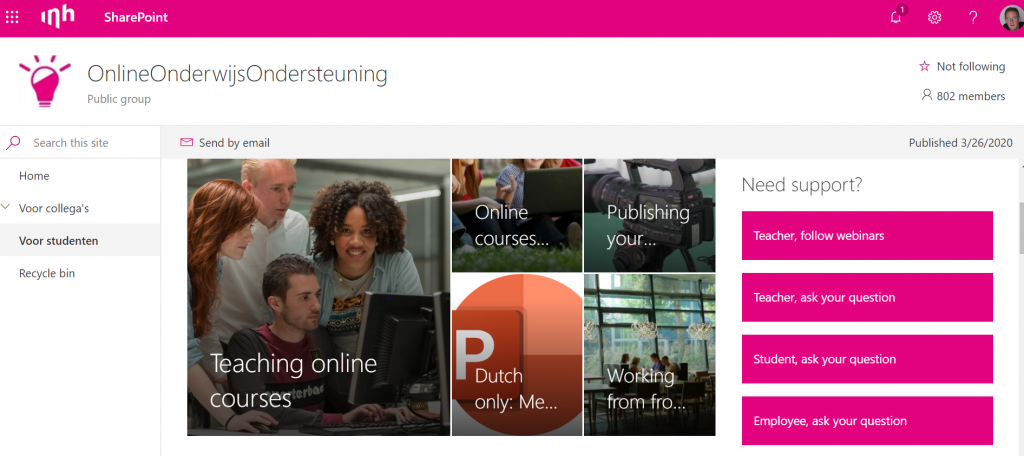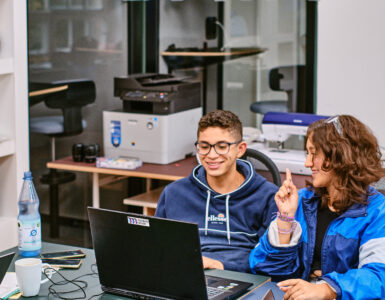Higher Education in the Netherlands closed the doors to physical classrooms on March 12th. Like countries around the world, the Dutch Government required this.
In one flick of the switch, education went 100% online. Around the world we are all having to adapt very quickly.
This is an extraordinary and unprecedented situation. So much has happened in such a short time. This is a snapshot of some of the things I’ve seen.
Inholland University of Applied Sciences, the Netherlands
At Inholland, we moved quickly. And I think we have done a good job so far. There is an extraordinary sense of comradeship, sharing, exchanging and helping. Our Dean spoke to us via a video recording from her home office.
Inholland already has areas of expertise regarding online education. Our Research Group – Teaching Learning and Technology conducts research into the implementation of technology into education. We have an excellent team of IT support and much knowledge within our colleagues who have a track record of providing Video Support.
Crisis Team
The board of directors set up a crisis team. They met on a Friday evening. Worked through the whole weekend. And launched a number of useful documents and support services on the Monday. Microsoft Teams became the main online meeting/lesson tool. They gave online trainings and workshops. My colleague from the research group taught a crash course on using MS Teams to a group of 50 teachers. We are on steep learning curve developing our online competences.
Stages of progress
We are going through the following stages:
- Stage 1 Using and trying out the technology, experimenting, IT support.
- Stage 2 Teaching our first classes on line.
- Stage 3 Rethinking and adjusting the didactic.
- Stage 4 Developing online competences.
- Stage 5 Will involve a fundamental rethinking of education.
In practice, we have had to implement stages 1-4 simultaneously so the learning curve is very steep!
Our first goal was to keep education going. We provided lessons in their usual format. Spent time helping colleagues in groups, or individually, to use the different technology. ‘How do I set-up a session in MS Teams and invite a class?’ ‘How do I share my screen?’ and ‘What should be our online meeting protocol?’. A series of very helpful ‘Sways’ were created by the crisis team. They provided simple and clear information for teachers and students on the first practical steps to move online. Moving education online not simple. Lecturers have discovered that Face-to-Face education cannot be mirrored 1:1 into an exact online copy. Even with all the useful information, many teachers still need individual support to make their lessons happen.
Central Communication
An ‘Online Education Support’ button was added to our internal home page. The film on ‘Recording your screen using PowerPoint’ was viewed 600 times. Adoption of new tools has skyrocketed through necessity.

The button for ‘Online Education Support’ has an area for staff and one for students. It is arranged as follows.
1 Support for students
- How to study online, Using your technology at home and a Q&A section.
2 Staff/Lecturers:
- Explanation/Instructions – Giving a lesson online, publishing on MS Stream, working efficiently from home, making a screencast, Using MS Teams.
- IT Support, FAQ, Tips and Ideas
- A full programme of Live Webinars from colleagues; from Yoga to Creating Interaction Online.

Schedule of online training sessions for and by colleagues

Support page for students
Students must be the priority
Students face many practical issues including their welfare, safety and loss of income. They need a place where they can study, with good WiFi and working computer. Students abroad on study trips, work placement and international exchange were all repatriated within two weeks. Our students are competent in using online tools such as chat and messaging. They know when to switch their audio on to make a point. We can ask their help when we struggle with the technology.
Teaching from home
All staff face challenges working from home. Blurred lines between work and private. Children run into our meetings, WiFi may crash. We need to all buy good headphones with a microphone. Lighting is needed for clear video communication. It is a challenge to stay healthy and exercise. Standing while teaching can help, going outside and staying active.
Regular Schedules and Interaction
Inholland scheduled classes to go ahead as normal on time tables. For our new period, we are rethinking online pedagogy. Shorter lesson online. More preparation in advance. We try to provide a clear and regular structure for students. The challenge is to engage students and be interactive. Quick wins are when one teacher shares recorded lectures with otherse. Q&A sessions on MS Teams are recorded and shared to students.
Exams the big challenge
Some exams had to be rescheduled. But when? Central planning is working full time on this. The impact is at many levels. Exams were colour coded; Green ‘Can go ahead as planned’ to Black ‘No online replacement’. Many assignments can be submitted online as normal. Group presentations, oral exams and graduation defence happen through MS Teams. The recording is archived.
Written exams, multiple choice, essays and open case questions are not so easily transferred to a safe online environment. The race is to find solutions. Online Proctoring is now being examined as a real alternative (see the useful White Paper). Current circumstances mean considering new options and scenarios.
Which systems and tools?
We have experience using a variety of tools And have our preferences. Internally we have MS Teams. Some of us have been experimenting with Zoom or screencast programmes. Each has its own features. We must be GDPR compliant. The discussion is continuing.
What does the future hold?
The initial closure has been extended to June 1st. Time is needed to create asynchronous educational activities. To record web lectures and make online quizzes. The number of videos shared via MS Stream has increased dramatically included Q&A sessions with students, or lessons.
Perhaps the initial sense of enthusiasm and can-do attitude is being tempered. After several intense weeks teaching behind screens, uncertainty about the future remains. Students are concerned about staying on track. A different set of teaching responsibilities have arrived in our inbox. Things have changed and may never be the same.
But we are working together and are open to new approaches. We will find a way to provide our students with the education they deserve. Even if that means, for the moment, 100% online!

Author
Zac Woolfitt
Inholland University of Applied Sciences, The Netherlands
Read more from Zac’s blog.














